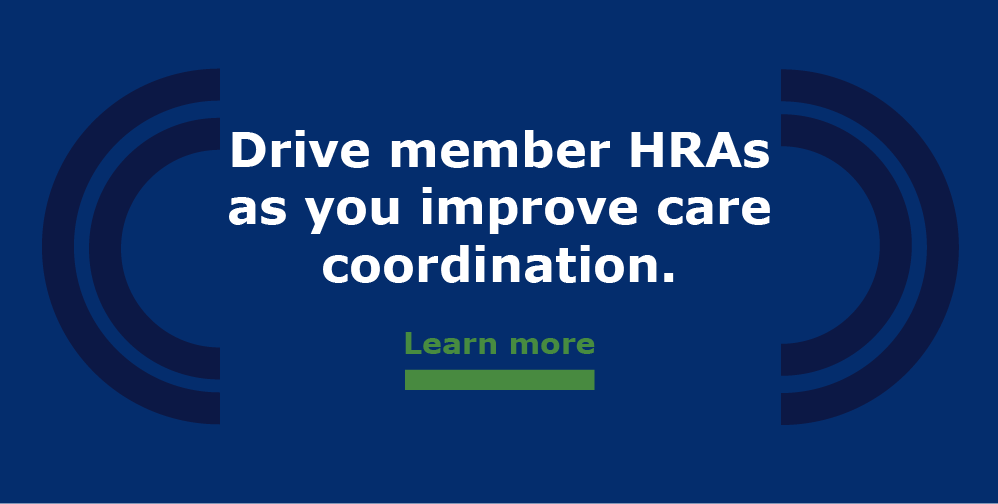HHS OIG Calls for MA Plans to Provide Care Coordination Beyond HRAs

In a report released on September 10, the US Department of Health and Human Services (HHS) Office of Inspector General (OIG) expressed concerns about how Medicare Advantage (MA) organizations are providing efficient care coordination and caring for their highest-risk, chronically ill patients.
This follows an HHS OIG study that found that MA organizations generated about $2.6 bil. in revenue from filing Health Risk Assessments (HRAs) without providing further member care. The Office was particularly concerned about in-home HRAs, which accounted for 80% of total HRA claims; these are unlikely to have been provided by the beneficiaries’ primary care providers (PCPs), as is the preference.
Of the five recommendations the Office made, the Centers for Medicare and Medicaid Services (CMS) has agreed with two. CMS will:
- provide targeted oversight of the 10 parent organizations that drove most of the risk-adjusted payments resulting from in-home HRAs and
- provide targeted oversight of the 20 MA organizations that drove risk-adjusted payments resulting from in-home HRAs for beneficiaries who had no other service records in the encounter data.
Then, on September 14, CMS announced that starting in 2022 the organization will exclusively use encounter data to determine the patient’s risk score. The change makes it increasingly critical to boost patient show rate and capture the encounter data — whether care happens at home, in the office or virtually.
For MA plans, the era of benefitting solely from conducting HRAs is ending. Essentially, HHS OIG is asking plans to think about how they improve care coordination for their beneficiaries — managing transitions of care efficiently and identifying and providing care for their highest-risk members. It’s now time for MA plans to focus on solutions to improve care management efficiently if they are going to maintain and grow their revenue.
Easily drive HRAs and document encounter data while providing better member care.
How do MA Plans Improve Care Coordination?
There are three key steps that will help MA plans improve care coordination for their high-risk members. I will expand on them below but to summarize, they are:
- Increase network visibility to identify high-risk members.
- Schedule appointments and improve member show rate.
- Close the loop on patient care.
1. Increase Network Visibility to Identify High-Risk Members
Plans must implement a system to efficiently collect, document and organize Hierarchical Condition Category (HCC) coding for members.
What is HCC coding? HCC coding is a risk-adjustment model that attempts to estimate the future health care costs of patients; it is the model used by CMS to determine risk adjustment payments to MA plans.
With accurate HCC coding, plans can target their highest-risk members and most complex cases for the appropriate level of care that will improve health outcomes. Technology that offers this level of network visibility shows CMS that plans are serious about improving these high-risk members’ overall health.
2. Schedule Appointments and Improve Member Show Rate
Members don’t follow through with referrals nearly half the time. Physicians can only improve care when members show up, so acting strategically to boost show rate within your network is key.
With appointment scheduling at the point-of-care at the PCP’s office, members are at least 60% more likely to complete their specialist appointments. This creates more opportunities to match coding appropriately to the member’s condition and give the patient the care their risk level requires.
3. Close the Loop on Patient Care
Finally, more coordinated care means that specialists close the referral loop and send notes on member care back to the PCP through the electronic medical record (EMR). An effective system for closing the loop on transitions of care should work across multiple EMRs for maximum impact on both member care and plan revenue.
ReferWell is EMR-agnostic software proven to help specialists close the loop at twice the national average, so PCPs can ensure new conditions are captured appropriately in the risk scoring and managed correctly.
How Does Better Care Coordination Increase Plan Revenue?
Improving member HCC coding accuracy increases revenue on its own. Each additional risk assessment completed means about $1,500 for the plan. But HHS OIG asks plans to do more for their riskier members and better manage the entire care journey.
When you implement a Virtually Integrated Network (VIN) — a system that improves care coordination by driving efficient care transitions and closing the loop — you can increase CMS reimbursement rates and justify the additional revenue. VINs give you a truer picture of member care, not just improving coding accuracy but also showing you directed patients to the right provider, tracking that care and closing the loop. Overall, VINs help plans provide better quality care and prove that they deserve the revenue.
Source:
https://link.springer.com/article/10.1007/s11606-018-4392-z
Written by Gene Huang
Gene is an expert in building and scaling healthcare businesses, including health plans and provider organizations; payment reform and value-based care initiatives; and post-acute and long-term care. His three decades of experience includes leadership roles at Oxford Health Plans and Cigna, and investor roles in healthcare ventures. As ReferWell’s Executive Chairman, Gene develops strategic relationships with partners to drive short-term revenue and long-term strategic alignment. Gene has been a ReferWell board member since 2015.

 © COPYRIGHT REFERWELL
© COPYRIGHT REFERWELL 